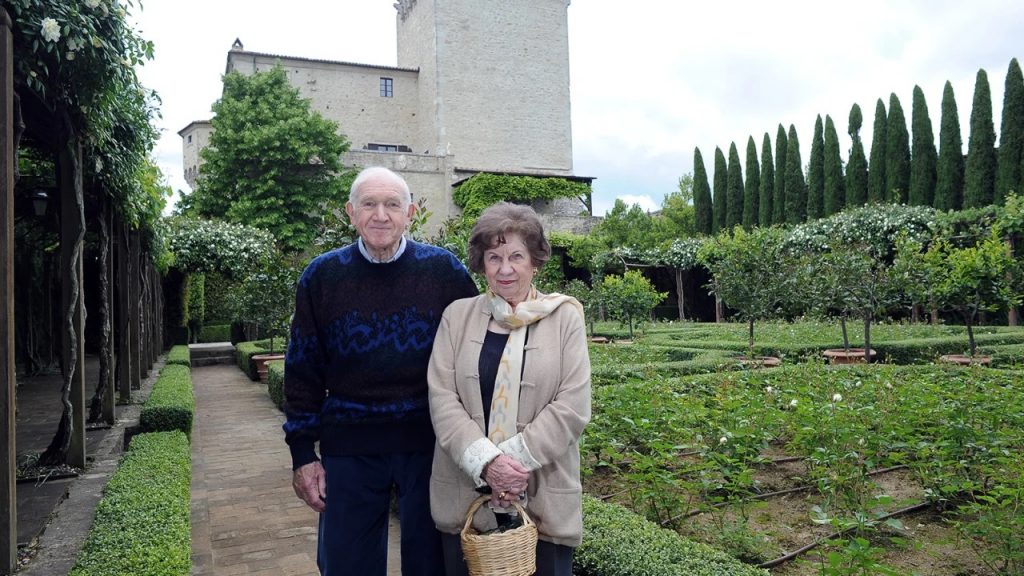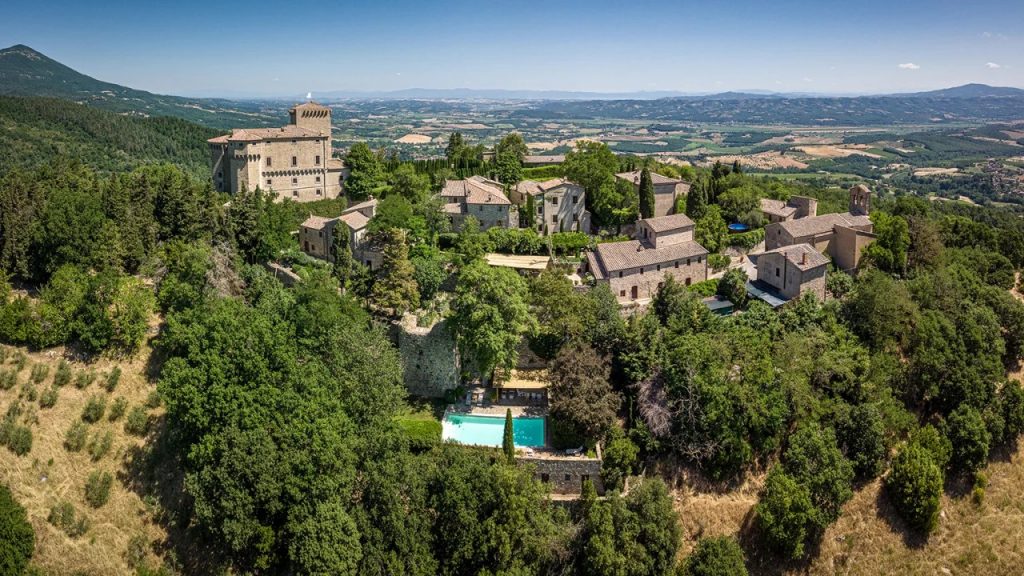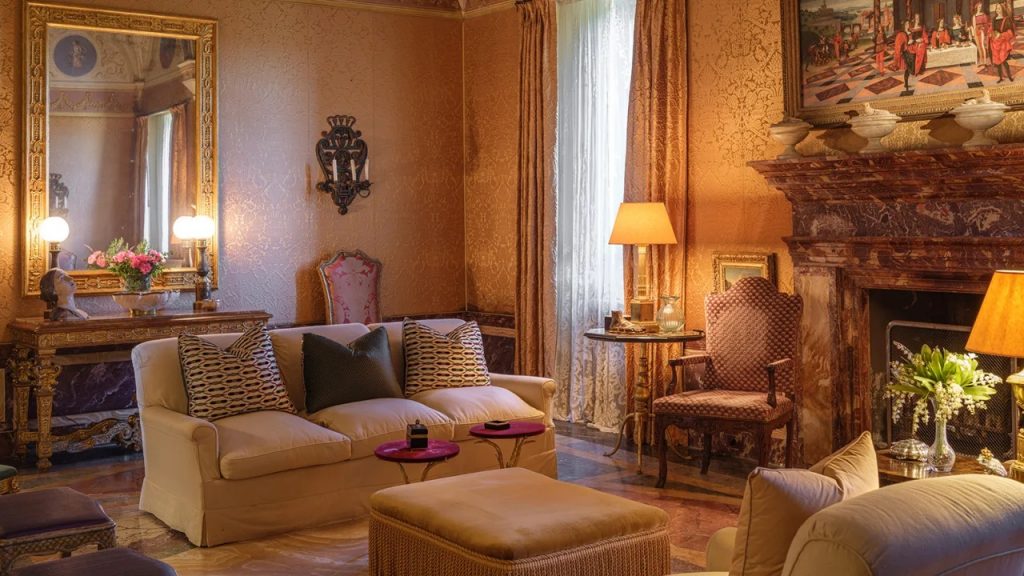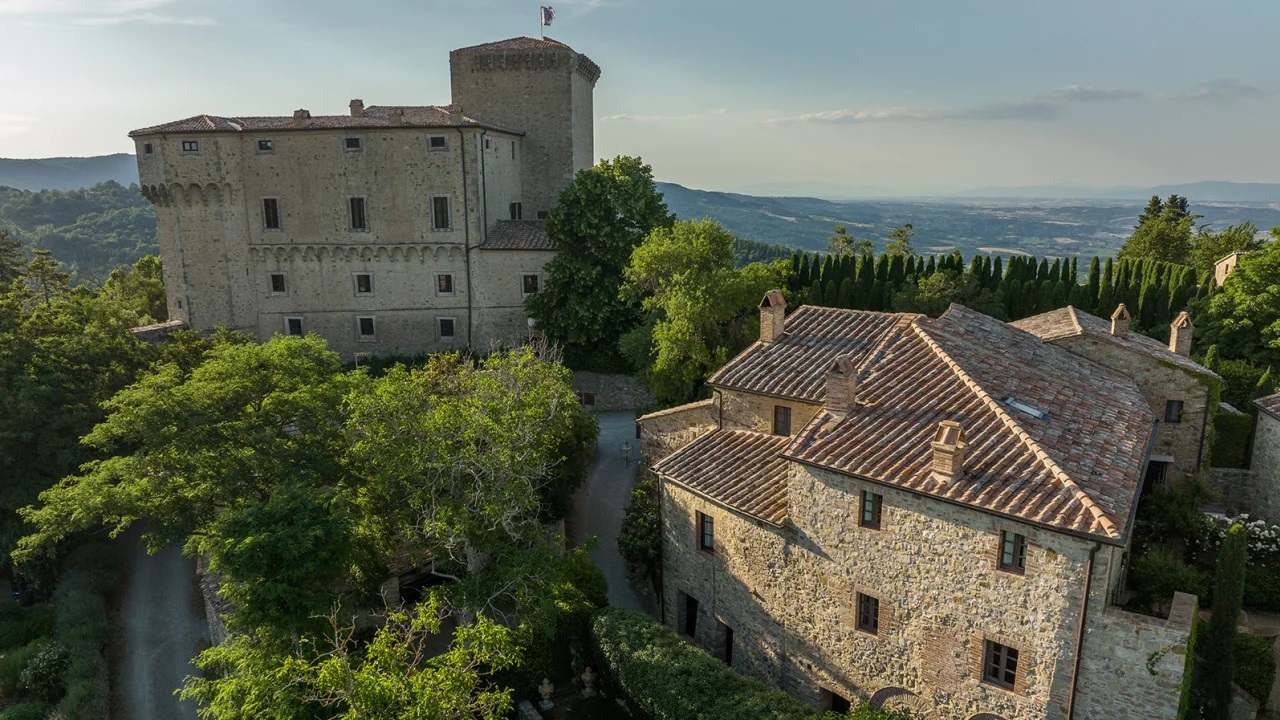
CNN – When South African couple Max and Joy Ulfane began searching for their dream Italian home around 28 years ago, they never imagined that they’d end up buying a rundown castle in Tuscany.
But the entrepreneurs, who are based in the UK, quickly fell in love with Castello di Fighine, a neglected medieval military fortress with an attached hamlet, when they came across it back in 1995.
The Ulfanes have since transformed the castle, perched 650 meters (2,130 feet) above sea level in the municipality of San Casciano dei Bagni, near the Umbria border, into a very lavish second home.
“We’ve put lots of labor and love in here, facing and overcoming challenges. And lots, lots of money to bring this place back to life again,” Joy Ulfane tells CNN. “And to think that we never wanted a castle, never wanted to own one.”
Castle home

The couple say they’d viewed dozens of unsuitable properties around Italy before the hilltop castle, surrounded by olive groves and forests, was brought to their attention.
“One day the sales person told us ‘oh, there’s this place in Tuscany but it’s not for you, you won’t like it’ – and that did it,” adds Joy.
Feeling intrigued, they traveled to the hamlet of Fighine to view the castle, and were greeted by a hugely neglected ivy-covered building with high-vaulted ceilings and several rooms, including a wine cellar.
Although it was dilapidated and filled with rubble, the Ulfanes saw huge potential in Castello di Fighine and felt it was the right place for them.
The Ulfanes were also captivated by the timeless feel of Fighine, which is still encircled by 1.5 meter thick defensive walls with octagonal towers and small round turrets attached.
“We visited Fighine and it was just very romantic even if the castle was falling to pieces, covered in ivy and moss,” explains Joy Ulfane. “It was impossible to walk through.”
They purchased the fortress, which apparently belonged to an aristocratic family at the time, for an disclosed sum that same year, and soon got to work on what would turn out to be a four-year renovation process.
Once they began tearing down the vegetation covering the castle, a tower was discovered that hadn’t been visible previously.
The Ulfanes later decided to purchase some of the rundown houses in the surrounding hamlet, and began renovating them once they’d completed most of the work on Castello di Fighine. This process took a further eight to 10 years.
They’re very proud of the entire project and consider it to be a real feat, particularly as they to constantly had to liaise with local town hall San Casciano dei Bagno and Soprintendenza delle Belle Arti, the Italian government office responsible for heritage properties, throughout the process.
“The castle is classified as a historical property so without the necessary permits from the Belle Arti we couldn’t even overturn a single stone,” adds Joy Ulfane.
According to Italian law, any structural changes that could alter the original architecture and purpose of a historic property must be supervised and green lit by the appropriate office, placing many restrictions on the type of work that can be done during this type of overhaul.
But the couple focused on restyling the rooms and making the property habitable again.
While the renovation process was far from simple, the Ulfanes’ perseverance paid off, and they are very happy with their beautifully restored fortress. The rooms inside the castle have been completely overhauled, with stunning results.



